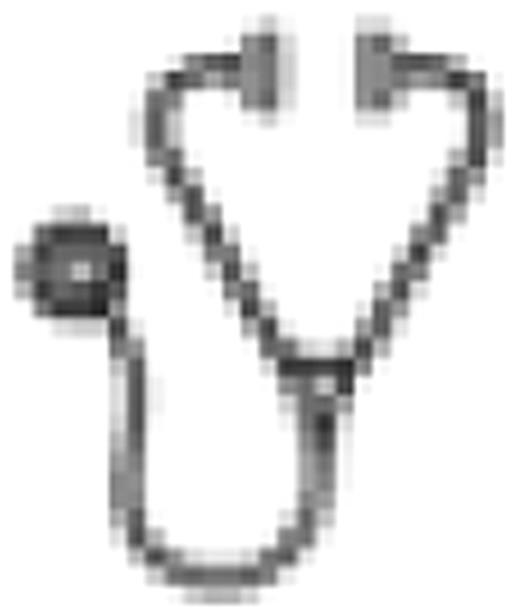Abstract
Abstract 1693
The WHO 2008 classification of hematological malignancies defines distinct acute myeloid leukemia (AML) entities based on cytogenetic and molecular characteristics. However, immunophenotypotyping and morphology are still essential for rapid and correct diagnosis and for guidance of initial treatment, which in the future will be more and more genotype-specific. Although associations between phenotype and genotype have been described, correlations were evaluated mostly in retrospective studies not considering more recently identified gene mutations.
To identify correlations between genotype and phenotype in adult AML.
Immunophenotyping, cytogenetics and molecular analyses were performed centrally within the diagnostic screening procedure of a prospective multicenter phase III treatment trial for patients with AML aged 18 to 59 years. A total of 270 samples were analysed. The antibody panel for immunophenotyping was based on the recommendations of the German network of competence chronic and acute leukemias and the WHO-2008 classification.
AML with NPM1 mutation (NPM1mut) were characterized by higher expression of membrane-bound (m) CD33 (98% vs. 83%, p<0.0001), mCD11b (90% vs. 36%, p<0.0001) and mCD184 (90% vs. 37%, p<0.0001), whereas mCD34 (14% vs. 82%, p<0.0001), cytoplasmatic (c) CD34 (25% vs. 85%, p<0.0001), mHLA-DR (70% vs. 85%, p=0.001), mCD117 (66% vs. 86%, p<0.0001), and mCD133 (8% vs. 40%, p<0.0001) were significantly lower expressed compared with NPMwt AML. In AML with NPM1mut, the presence of an activating FLT3 mutation was associated with higher mCD34 (22% vs. 3% p=0.014), cCD34 (33% vs. 13% p=0.03) and lower mCD61 (11% vs. 31% p=0.03) and mCD42b (0% vs. 14% p=0.04) expression.
AML carrying a CEBPA double-allelic mutation (double-CEBPAmut) was characterized by higher expression of mCD34 (100% vs. 56%, p<0.0001), cCD34 (100% vs. 62%, p=0.001), mCD117 (100% vs. 79%, p=0.003) and of the lymphoid-associated antigen mCD7 (93% vs. 27% p<0.0001) compared to single-CEBPAmut and CEBPAwt. This phenotype was strongly related to double-CEBPAmut (chi square test p<0.0001) but not to AML with single-CEBPAmut. AML with t(8;21) presented with a characteristic phenotype consisting of high cCD34 (100% vs. 62%, p=0.0009), mCD34 (100% vs.56% p=0.0001), mHLA-DR (100% vs.63% p=0.02), mCD117 (100 vs. 78%, p=0.03), and lymphoid-associated antigens mCD19 (76% vs. 2% p<0.00001) and mCD56 (64% vs.11% p< 0.00001) expression.
AML with inv(16) or t(16;16) had higher expression of cMPO (100% vs. 88%, p=0.02), mCD34 (90% vs 60%, p=0.0002), cCD34 (86% vs. 65%, p=0.01) and mHLA-DR (96% vs. 81%, p=0.01), whereas lymphoid antigens and platelet-associated antigens were significantly lower expressed (mCD56, 0% vs. 17%, p=0.01; mCD7 3% vs. 35%, p=0.0002; mCD61, 0% vs. 20%, p=0.003; mCD41, 9% vs. 38%, p=0.008; mCD42b, 0% vs. 9%, p=0.04).
The associations of specific phenotypes to genotypes were as follows: i) cMPOpos/mCD19pos/cCD34pos/mCD34pos/mCD117pos/mHLA-DRpos to t(8;21) (p<0.0001; sensitivity, 76%; specificity, 99%); ii) cMPOpos/mCD7pos/mCD34pos/cCD34pos/mCD117pos to double-CEBPAmut (p<0.0001; sensitivity, 94%; specificity, 90%); iii) cMPOpos/mCD33pos/mCD34neg/mHLA-DRneg to NPM1mut or acute promyelocytic leukemia exhibiting a t(15;17) (p<0.0001; sensitivity, 20%; specificity, 98%); iv) cMPOpos/cCD34pos/mCD34pos/mHLA-DRpos/mCD56neg/mCD7neg/mCD61neg/mCD41neg to inv(16) (p<0.0001; sensitivity, 75%; specificity, 91%).
The present study shows strong associations between specific immunophenotype patterns and genotypes in AML, which might be useful for daily clinical practice and future genotype-specific treatment.
Salih:Pfizer: Research Funding. Döhner:Pfizer: Research Funding. Schlenk:Celgene, Pfizer, Novartis, Amgen, Cephalon: Research Funding.

This icon denotes an abstract that is clinically relevant.
Author notes
Asterisk with author names denotes non-ASH members.

This feature is available to Subscribers Only
Sign In or Create an Account Close Modal